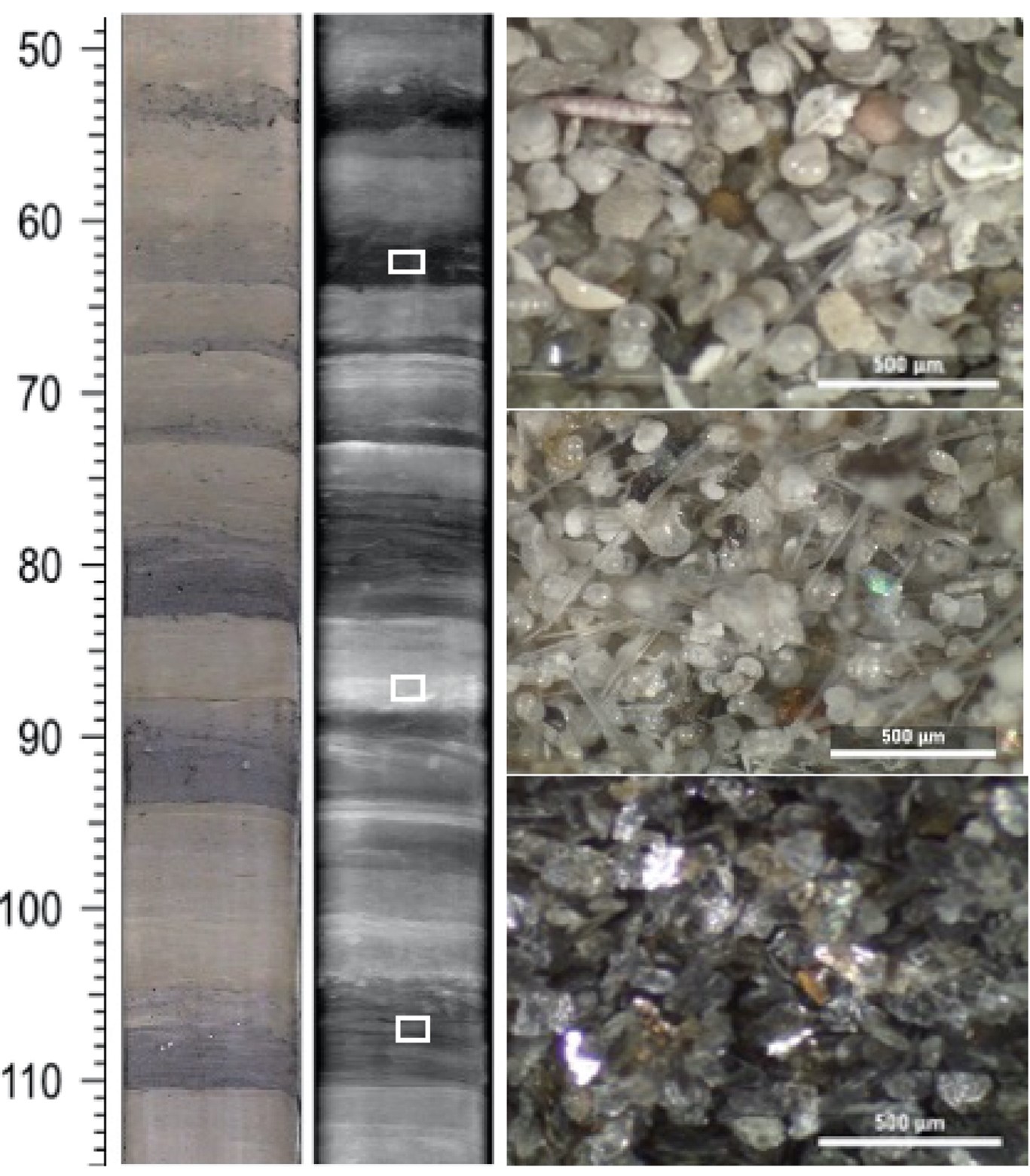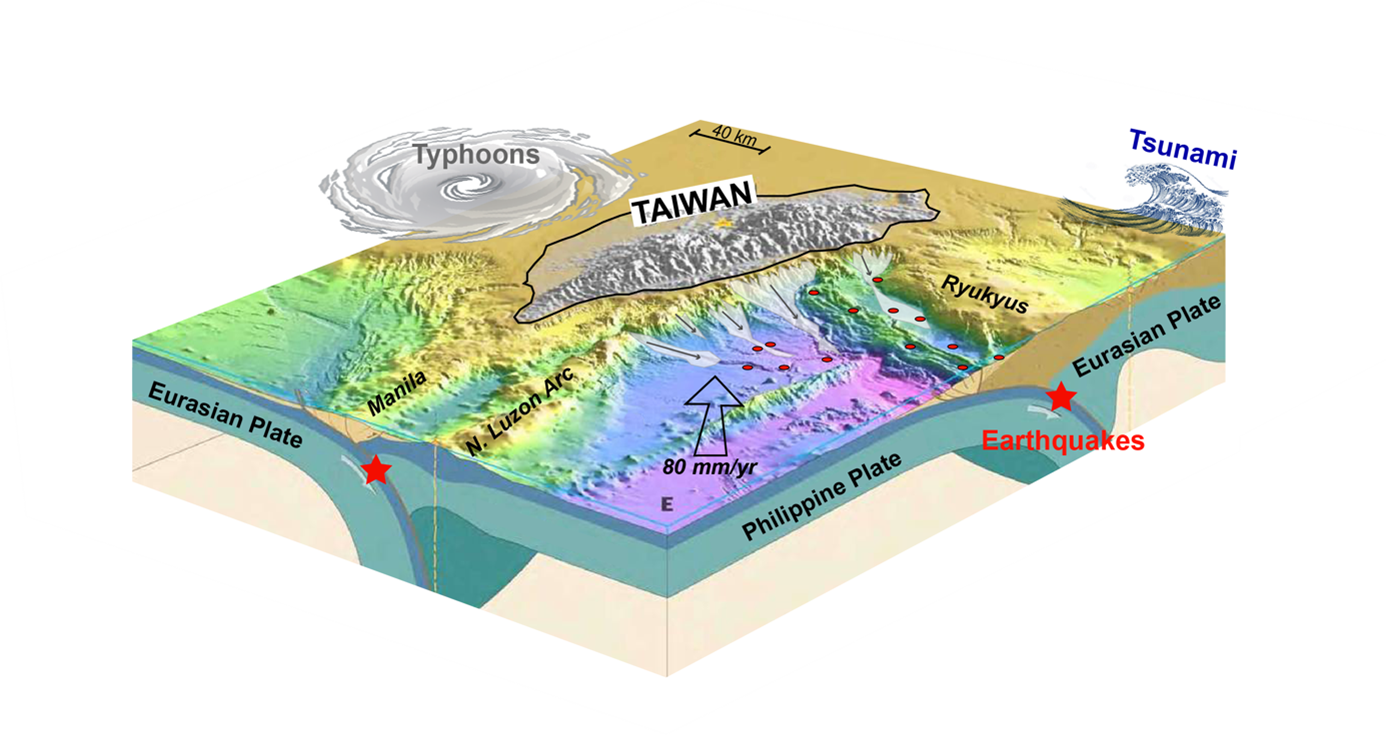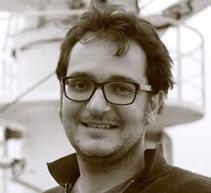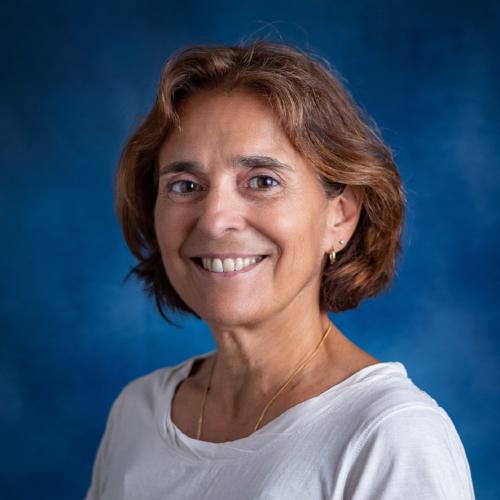Academy of Excellence "Space, Environment, Risk and Resilience"
Deciphering the deep-marine sedimentary archive of past extreme events east of Taiwan
An oceanographic cruise collected seafloor data that will help understand the occurrence and cyclic nature of extreme typhoons, earthquakes and tsunamis offshore Taiwan
Academy 3 highlight
This marine sedimentological and geophysical exploration aims at reconstructing the time series of extreme telluric and climatic events occurring on- and offshore Taiwan. The forthcoming results have strong implications for “limiting the natural hazards on coastal societies.”
The project
By definition, extreme events are rare, and instrumental and historical records are too limited. It is therefore essential to establish time series of several thousands of years (or more), first, to constrain the recurrence and intensity of such events; second, to better understand the factors that control them in the long term; and third, ultimately draw up predictive models of these natural hazards and improve the prevention of the associated risks.
Deciphering the geological record is thus necessary to establish long time series. Due to the high level of erosion on the island, the geological traces of these events on land are limited or incomplete. In contrast, in the marine realm, where deposition prevails, traces of such events are very well preserved. Catastrophic events generate submarine landslides and turbidity currents whose deposits (turbidites) contrast with the slow background sedimentation; they are identifiable and datable by marine sedimentary cores. Detailed analysis of the sedimentary sequences and their contents can be used to trace the source areas, and to discriminate between triggering factors such as large earthquakes, tsunami wave washout, or exceptional floods caused by typhoons.


The +
The project used a transdisciplinary approach that involved studying both natural hazards and threats to the oceans and coastal areas.
What’s next?
After the preliminary results were obtained, the opportunity was given to our UniCa PhD student to spend two months conducting research in the Taiwanese partner lab. Depending on the final results, we will discuss the possibility of submitting a bilateral ANR PRCI proposal.
Project information
|
Scientific domain
Earth Sciences Seismic Risks Marine Geosciences |
Key words Paleo-seismology Earthquake Typhoon Tsunami Turbidite |
|
Total budget
€6,940 from Academy 3
|
Students involved
Cedric Turel |
| Partners Géoazur - Université Côte d’Azur, CNRS, OCA, IRD Geo-Ocean – CNRS, Ifremer, UBO, UBS International collaborations College of Earth Sciences – National Central University – Zhungli-Taiwan |
Project members Gueorgui Ratzov Gueorgui Marie Revel Marie Nathalie Babonnea Shu-Kun HSU |

Gueorgui Ratzov
Géoazur - Université Côte d’Azur, CNRS, OCA, IRD

Marie Revel
Géoazur - Université Côte d’Azur, CNRS, OCA, IRD

















